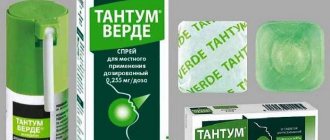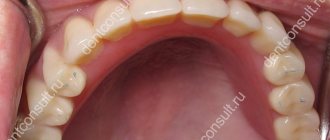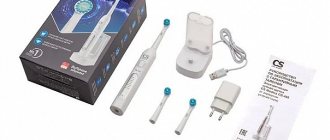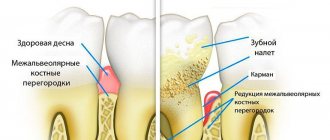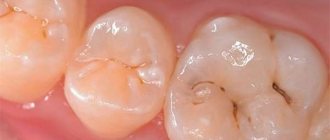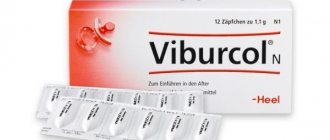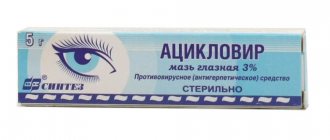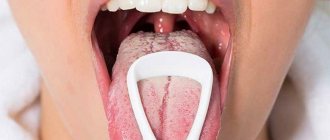Treatment of diseases caused by bacterial infections is carried out with the help of antibiotics, presented in natural, semi-synthetic and synthetic forms. Broad-spectrum antibiotics of the new generation, the list of which includes drugs with different chemical structures, differ in effectiveness, duration of treatment and side effects.
Unlike narrowly targeted antibacterial agents, drugs with a broad spectrum of action are effective against many bacteria (up to 20 strains) and act on most pathogens.
Why is antibiotic therapy needed after wisdom tooth extraction?
Prescription of antibiotic therapy after figure eight extraction is common. Taking such medications is absolutely necessary to prevent the development of inflammatory processes and provide pain relief.
Antibiotics are indicated for the following pathological processes:
- Taking antibiotics is necessary to prevent the development of inflammatory processes and relieve pain
Violation of the integrity of the walls of the hole.
- Low level of immune defense of the body.
- Thrombus failure.
- Parallel occurrence of chronic pathologies.
- Opening of bleeding after tooth extraction.
- Inflammation of the alveolar ridge of the jaw.
- Damage to the ternary nerve.
- Development of periodontitis.
- Periostitis and its complications in the form of flux development and swelling of facial tissues.
- Infectious purulent-necrotic inflammation of bone tissue, which is manifested by the release of purulent exudate from the gums.
Important! When diagnosing a patient with oncological and hematological diseases, as well as diabetes mellitus of any type, the prescription of antibacterial drugs is mandatory. This is due to a low level of immune defense. In this condition, the body cannot fight the infection on its own.
Myth. Tetracyclines are traditionally “weak” antibiotics, much less powerful than penicillins
Is it true.
In fact, tetracyclines have a wide range of antibacterial activity, and their modern representatives act against an even larger number of bacteria than their predecessors, including a number of pathogens that are resistant to other classes of antibiotics. Thus, tigecycline, which appeared on the market only in the mid-2000s, was developed as part of a program to combat the growing antibiotic resistance of such “complex” pathogens as Staphylococcus aureus and Escherichia coli [6].
Tetracyclines, including tetracycline and doxycycline, which have been used for decades, are able to penetrate into cells, which is why they are still widely used today to treat intracellular sexually transmitted infections (chlamydia, ureaplasmosis, mycoplasmosis). Indications for their use also include Helicobacter pylori infection - as part of eradication therapy. Due to its effectiveness against Propionibacterium acne
tetracyclines, along with macrolides, are used to treat acne.
Minocycline, whose spectrum includes Neisseria meningitidis
, is used to prevent meningococcal infection [2].
As a fly in the ointment, it should be mentioned that most tetracyclines (with the exception of modern representatives) are characterized by a high level of secondary resistance of many bacteria and, in addition, cross-resistance of microorganisms [3]. And this, undoubtedly, in many cases reduces their relevance.
What antibiotics do dentists prescribe?
The modern pharmacological market is represented by a wide range of antibacterial agents that can be used in the postoperative period.
Due to their high therapeutic effect, the following types of antibiotics are most popular among dental specialists:
| Name | Brief description of technique and action | average price |
| Lincomycin | An antimicrobial agent belonging to the lincosamide group. When taken in a large dosage, it has an additional bactericidal effect. They are characterized by a wide spectrum of action against many types of microorganisms. Pharmacological form of release: injections and tablets. | Table – 150 rub. Ampoules – 90 rub. |
| Flemoxin | Has a wide spectrum of action. The active substance is penicillin, which effectively relieves inflammation and lowers body temperature. Available in the form of tablets and suspensions, which makes it easier for children to take the medicine. | 318 rub. |
| Amoxicillin | A broad-spectrum antibacterial drug belonging to the penicillin group. The active ingredient is amoxicillin trihydrate. Has a bactericidal effect. Used in the treatment of many dental pathologies in children and adults. Produced in the form of suspensions, capsules and tablets. | Table – 55 rub. Caps – 80 rub. Suspensions – 142 rub. |
| Sumamed | It belongs to the new generation of antibacterial drugs and has a wide spectrum of action. The active substance azalide acts bacteriostatically, destroying gram-positive and some anaerobic microorganisms, gram-negative bacteria. The antibiotic is not used to eliminate erythromycin-resistant gram-positive bacteria. | Table – 315 rub. Dispersing tablets – 810 rub. Capsules – 480 rub. Powder – 264 rub. |
| Amoxiclav | A combined antibiotic drug consisting of semi-synthetic penicillin and clavulanic acid. It has a therapeutic effect in diagnosing infectious and inflammatory pathologies. Active against many gram-positive and gram-negative microorganisms. | Table – 425 rub. Powder for injection – 814 rub. Powder for oral administration – 134 rubles. |
| Azithromycin | Refers to antibiotics of synthetic origin that quickly suppress infection. Taking the minimum dosage effectively inhibits the life cycle of bacteria, and the optimal dose completely destroys them. It is distinguished by the rapid penetration of the active ingredient through the membrane of pathological cells. This provides rapid antibacterial and anti-inflammatory effects. A short course of treatment, no more than 3 days. | Table – 140 rub. Capsules – 75 rub. |
| Tsifran | Broad-spectrum antimicrobial drug. The active substance is ciprofloxacin. The main effect of this antibiotic is to inhibit bacterial enzymes and disrupt their DNA synthesis. After administration, it retains its post-antibiotic effect for 6 hours. | Table – 285 rub. |
Important! The prescription, dosage and regimen of antibiotics are prescribed exclusively by the attending physician, taking into account the health status and age of the patients.
The duration of the therapeutic course is set according to the intensity of the drug.
List of the best new generation broad-spectrum antibiotics for adults in tablets
tableted antibiotics
to destroy strains in the form of bacteria, fungi and other pathogenic microorganisms . The latest pharmaceutical developments include the following antibiotics:
- Avelox. Exclusively adult antibiotic of a new generation. It is one of the strongest and has an excellent suppressive effect on a wide range of bacteria and other atypical pathogens.
- Cefixime. It can be produced both in tablets and capsules. It is used in the postoperative period, for colds, intestinal infections, and prostatitis. Acts by preventing the synthesis of pathogenic microorganisms. It has a fairly strong toxic effect, so it is contraindicated for people with impaired liver and kidney function.
- Unidox Solutab. The product belongs to the latest generation tetracycline group. Actively used in the treatment of colds, acute respiratory viral infections, intestinal infections, and urogenital pathologies. The main active ingredient is doxycycline.
- Rulid. Refers to fourth generation macrolides. It has proven itself well in the treatment of infectious inflammation of the upper respiratory organs, genital infections, and gastrointestinal tract infections. Although the product has a limited antibacterial effect, it has established itself as an excellent antibiotic.
Contraindications
Antibacterial drugs are prescribed exclusively by a doctor, as drugs in this group have a wide range of contraindications. This takes into account the physiological characteristics of the body, the presence of chronic diseases and the age category of the patient.
Antibacterial drugs should not be used in the following cases:
- Each antibacterial drug has its own list of main contraindications and features of its use.
Dysfunction of the digestive system.
- Breastfeeding period.
- During gestation of an intrauterine fetus.
- Individual intolerance to the drug.
- The presence of allergic reactions to the components of the antibiotic.
- Kidney failure.
- Liver diseases of any etiology.
- Age category up to 12 years.
- Diabetes mellitus of any type.
- Arterial hyperplasia.
Each antibacterial drug has its own list of main contraindications and features of its use. Therefore, before using it, it is recommended to study the annotation for it.
List of new generation broad-spectrum antibiotics for acute respiratory viral infections and colds without prescriptions
Recently, it is increasingly necessary to resort to the use of antibiotics for acute respiratory viral infections and colds. Popular and widely prescribed drugs of domestic and imported origin, available without a prescription, include the following macrolides:
- Sumamed.
- Cefaclor.
- Cefamandole.
- Rulid.
- Clarithromycin.
- Avelox.
Rules for taking antibiotics after wisdom tooth removal
Regardless of the type of antibacterial drug prescribed by the doctor, after a wisdom tooth has been pulled out, it is recommended to strictly follow the basic rules for taking it:
- It is recommended to avoid the consumption of alcoholic beverages during antibacterial therapy.
Strict adherence to the regimen and dosage of the prescribed antibiotic.
- The optimal time to take the drug is an hour before a meal, or 2 hours after eating it.
- The drug is washed down with exclusively purified plain water. The use of juices and mineral water for these purposes is unacceptable.
- When taking other drugs in parallel, their compatibility should be taken into account.
- It is recommended to avoid the consumption of alcoholic beverages during antibacterial therapy.
- In order to avoid disturbances in the flora of the oral cavity and intestines, antifungal medications or probiotics are taken in parallel.
- If after taking antibiotics their effectiveness does not appear or side effects occur, the drug should be replaced with a more suitable one.
- Independent interruption of the course of therapy is not allowed.
Important! Improper use of antibacterial drugs can provoke the development of side effects. This will not only aggravate the recovery process after wisdom tooth removal, but can also provoke the development of other serious pathological processes.
The best broad-spectrum antifungal antibiotics: names and prices
The main thing in treatment with antifungal drugs is to identify the causative agent of the infection. This is done to determine the effective remedy and its dosage. Today, antifungal antibiotics are divided into 4 generations. They differ in that the first generation has a targeted effect on the pathogen (fungus) of a certain type, all subsequent generations of drugs are created taking into account the impact on many types of fungal infections. The following antifungal drugs are used in medicine:
| Generation | Antibiotics group | Price |
| I generation | - Levorin; - Nystatin. | 120-150 rubles 60-100 rubles |
| II generation | - Ketoconazole; - Mycozol. | 160-20 rubles 110-150 rubles |
| III generation | - Terbinafine; - Fluconazole. | 250-300 rubles 45-80 rubles |
| IV generation | - Voriconazole; - Itraconazole. | from 10 thousand rubles from 2.5 thousand rubles |
Side effects
Long-term use of antibiotics may cause side effects
Their manifestation can be triggered by incorrect selection and prescription of the drug, as well as if the rules for its use have been violated.
The pharmacodynamics of antibiotics is based on the absorption of the active substances of the drug by the intestines, followed by its distribution throughout all tissues of the body.
The active substances of the antibiotic undergo breakdown in liver cells and, together with bile, feces and urine, are excreted from the body.
With long-term use of the drug, the following side effects may occur:
- Development of dysbacteriosis or candidiasis.
- Attacks of nausea.
- Vomiting.
- Inflammatory processes in the oral cavity.
- Allergic dermatitis on the skin of the body and face.
- Minor vascular bleeding in the oral cavity.
- Kidney and liver dysfunction.
- Weakening of the body's protective functions.
Important! If side effects occur, you should immediately stop taking the drug and replace it as prescribed by your doctor.
Powerful natural broad-spectrum antibiotics: drug names
Nature also contains natural antibiotics of natural origin. These include:
| Photo | Name | Used for diseases |
| Propolis (tincture) | sore throat, oral infections, otitis media, pharyngitis, tonsillitis, sinusitis, purulent wounds | |
| Iceland moss | ENT organs, kills the tuberculosis bacillus, is successfully used in the fight against gangrene | |
| Viburnum bark | sore throat (gargling) | |
| Cranberry | colds, acute respiratory viral infections, genitourinary infections, kidney and urinary tract diseases. | |
| Horseradish (root) | upper respiratory tract |
